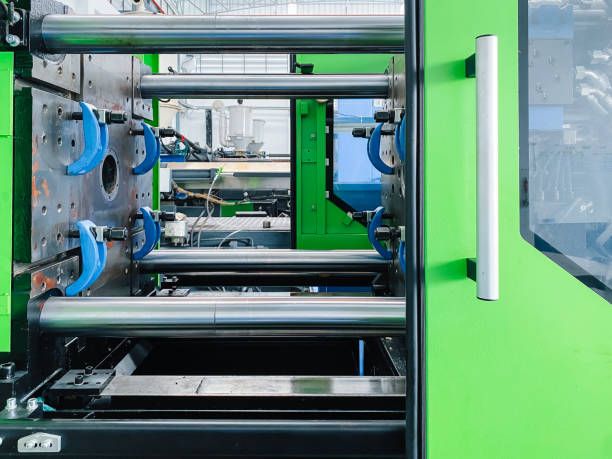Unlock your product's potential with our One-stop solutions!
+86-755-83222882

GET QUOTE
What Are the Methods of Injection Moulding Joining?
Injection molding is a widely-used manufacturing process that allows for the mass production of complex plastic parts with high precision. Among the numerous techniques and methods involved in this process, injection moulding joining stands out as a critical area that influences the integrity, functionality, and overall quality of the finished product. In this article, we will delve into the various methods of injection moulding joining, exploring how each technique works and its specific applications.
Understanding Injection Moulding Joining
Injection moulding joining refers to the methods used to connect different parts made from the injection molding process. This is crucial in creating composite components, assembling multi-part products, and ensuring the durability of the end product. Injection moulding joining methods are diverse, ranging from mechanical to chemical processes, each suited for different applications and materials.
Methods of Injection Moulding Joining
Mechanical Fastening
Mechanical fastening is a traditional yet effective method of injection moulding joining. This technique involves using screws, bolts, rivets, or other hardware to join molded parts. The simplicity and speed of this process make it suitable for high-speed assembly lines. Additionally, mechanical fastening allows for easy disassembly, which is beneficial for repairs or replacements. The joints created are strong and reliable, capable of withstanding significant stress. Mechanical fastening is often used in industries where high-strength joins are essential, such as in automotive, aerospace, and consumer electronics.
Snap-Fit Joints
Snap-fit joints are a popular method in injection molding joining due to their simplicity and cost-effectiveness. This technique involves designing parts with complementary snap-fit features that lock together when pressed. Snap-fit joints are cost-efficient as they eliminate the need for additional fastening components, reducing material costs. They also allow for quick and easy assembly without tools or adhesives. The flexibility of this method makes it suitable for a wide range of materials and product designs. Snap-fit joints are commonly used in assembling plastic housings, toys, and electronic casings.
Ultrasonic Welding
Ultrasonic welding is a sophisticated method of injection moulding joining that uses high-frequency ultrasonic vibrations to create a solid-state weld between plastic parts. This process produces strong, durable joints suitable for high-stress applications. Ultrasonic welding does not require adhesives or fasteners, which reduces material costs. Additionally, the process is rapid, allowing for high production rates. Ultrasonic welding is extensively used in the automotive industry, medical device manufacturing, and consumer electronics.
Adhesive Bonding
Adhesive bonding involves using a chemical adhesive to join injection molded parts. This method is versatile and can be tailored to different materials and requirements. Adhesive bonding can bond a wide variety of plastics and even different types of materials. It also provides excellent sealing capabilities, making it ideal for watertight or airtight applications. The stress distribution in adhesive joints is uniform across the bond area, enhancing joint integrity. Adhesive bonding is used in the automotive industry, electronics, and any application requiring airtight or watertight seals.
Heat Staking
Heat staking is a thermal method of injection moulding joining where a heated tool is used to deform a plastic stud or boss to mechanically secure two parts together. Heat staking produces strong, reliable joints and can be used with a variety of thermoplastics. It also provides a clean, finished appearance without visible fasteners. Heat staking is commonly used in automotive components, electronic housings, and consumer products.
Choosing the Right Injection Moulding Joining Method
Factors to Consider
Selecting the appropriate injection moulding joining method depends on several factors, including material compatibility, strength requirements, production volume, and cost constraints. Different plastics and composites may require specific joining techniques. The mechanical demands of the final product dictate the choice of joining method. High-volume production may benefit from faster, automated joining methods. Balancing cost-effectiveness with the quality and durability of the joint is also crucial.
Application-Specific Decisions
Each industry and application may prioritize different aspects of injection moulding joining. For example, the medical device industry often prioritizes joint integrity and biocompatibility, while consumer electronics may focus on aesthetic appeal and ease of assembly.
Innovations in Injection Moulding Joining
Laser Welding
Laser welding is an emerging technology in injection moulding joining that offers precision and control. This method uses a laser to melt and fuse parts together, providing strong, high-quality joints with minimal thermal impact on surrounding materials. Laser welding offers high precision, allowing for delicate and complex assemblies. It reduces the risk of material deformation and is capable of rapid joining processes, making it suitable for high-volume production.
Vibration Welding
Vibration welding is another innovative method where parts are joined by applying pressure and vibratory motion to create frictional heat, melting the contact surfaces and forming a solid joint upon cooling. Vibration welding produces robust and durable bonds and can be used with various thermoplastics. It is suitable for large and complex parts.
Conclusion
Injection moulding joining is a critical aspect of manufacturing that ensures the integrity and functionality of assembled plastic products. The choice of joining method—be it mechanical fastening, snap-fit joints, ultrasonic welding, adhesive bonding, or heat staking—depends on the specific requirements of the application, including material compatibility, strength needs, production volume, and cost considerations. With ongoing innovations such as laser welding and vibration welding, the field of injection moulding joining continues to evolve, offering manufacturers new ways to enhance their processes and products.
At SZOMK, we specialize in providing high-quality plastic injection molding solutions tailored to your specific needs. With our advanced technology and experienced team, we are well-equipped to handle all aspects of injection moulding joining, from mechanical fastening to innovative laser welding techniques. Partner with SZOMK to ensure your products meet the highest standards of quality and performance. Contact SZOMK today to learn more about how our injection molding expertise can benefit your next project.


